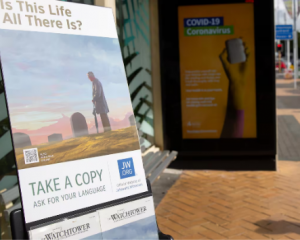A job surge associated with last year's Rugby World Cup may have proved a false hope for unemployed New Zealanders, as benefit numbers have crept up again this summer.
More than 22,400 people have joined the welfare rolls since September, and the numbers on student, training and other emergency benefits are the highest for nine years.
Unemployment always peaks in summer when students are looking for holiday jobs or finishing their education, but the increase in the same period last summer was only 14,500.
The official unemployment measure, Statistics NZ's household labour force survey, is not due out until February 9. But the benefit data suggest that a dramatic 9 per cent lift in Auckland employment in the year to last September was exaggerated by a rugby-related short-term blip.
The overall trend is still positive, especially in Auckland, where total benefit numbers have dropped by 3.2 per cent from 107,973 a year ago to 104,545.
But the region's beneficiary numbers fell by 397 between September and December last summer. In the same period since the Rugby World Cup this summer, they have jumped by 1487.
One of the big surprises is that beneficiaries have dwindled in earthquake-hit Canterbury in the past year, from 33,753 to 31,220, even though its employment also fell by 8 per cent in the year to September. Many people who were not tied to Christchurch by jobs may have left the city since the quakes.
Nationally, numbers on domestic purposes, sickness and invalid's benefits have been relatively stable. Invalid numbers have shrunk slightly in the wake of a tighter medical certificate introduced in September 2010 restricting the benefit to those whowill not be able to work even part-timein the next two years.
Numbers on the unemployment benefit rose by 1803 between September and December last summer, to 67,084. They slid to 55,661 last September, and to a low of 54,870 in October during the World Cup, but have jumped back up to end the year at 59,964.
But the biggest jump is in a category called "other'', which includes student and training unemployment benefits, emergency benefits, independent youth benefits and widows benefits.
They increased seasonally by 11,465 to 27,665 last summer, and have jumped this summer by 16,434 to 31,947 - the most since 2002.
Student Job Search chief executive Paul Kennedy said the increase reflected a trend for more people to stay in education when there were few jobs available.
"In recessionary times you always get more people going back to tertiary because they can't find a job,'' he said.
Student Job Search has taken 29,867 new enrolments since last July, up marginally from 29,455 in the same period the year before. Its job placements have dropped by just over 1000, from 15,334 to 14,265.
When the recession first hit in 2009, the Government gave the agency an extra $760,000 and gave universities extra funds to employ students on summer research jobs. But the funding has not been repeated.
Student Job Search closed all of its seven offices on regional campuses last September and now operates only a Wellington-based call centre, but Mr Kennedy said that had not reduced its success rate because most students were using the service online anyway.
"The primary reason we closed was that less than 10 per cent of students were going through those offices.''
Last week the service listed 2219 vacancies, well up from 871 at the same time last year.
Auckland University Students Association welfare officer Kelsey Carter said many students could find only casual work and were coming in to get hardship grants because they could not get work when they needed it.
"I know of someone who applied for 20 jobs before Christmas and still hasn't got anything,'' she said.
"I think a lot of people just give up after a while and go on the student hardship [student unemployment benefit].''
- Simon Collins of the New Zealand Herald












